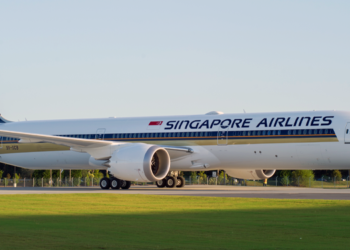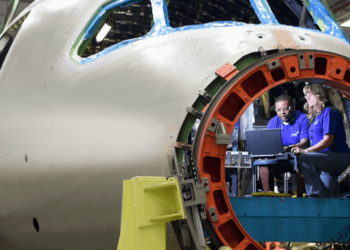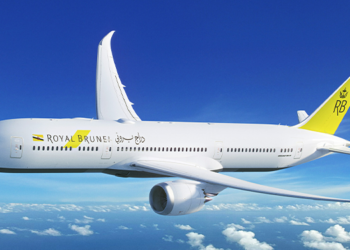Less than 24 hours after receiving authorization from the Federal Aviation Administration (FAA), Boeing’s highly anticipated 737 MAX 10 has embarked on its certification flight testing at Boeing Field in Seattle. This development marks a significant step forward for the aviation giant as it aims to secure the top position in the narrowbody market.
The U.S. aviation regulator granted the type inspection authorization, a crucial milestone that signifies the commencement of the certification process. This authorization comes after a meticulous examination of technical data by the FAA. With this clearance, FAA pilots can actively participate in flight testing, a necessary step to ensure the aircraft’s compliance with safety standards for normal operations.
Boeing’s 737 MAX series, which includes the MAX 8, MAX 9, and high-density MAX 8200, is currently in service. The introduction of the MAX 10 is a strategic move by Boeing to capture the top segment of the single-aisle market. This comes after a challenging period of production delays and heightened scrutiny following the tragic crashes of two MAX planes in 2018 and 2019, leading to a global grounding of the entire MAX fleet.
Boeing, however, expresses confidence in the performance of the 737-10 during its rigorous test program. With over 400 flights and nearly 1,000 flight hours, the aircraft has demonstrated its capabilities and resilience in various conditions.
The 737 MAX 10 is positioned as Boeing’s response to the Airbus A321neo, a formidable competitor from the European aviation giant. The A321neo has notably dominated the top segment of the single-aisle market, posing a direct challenge to Boeing’s MAX 9. The certification flight testing of the 737 MAX 10 signals Boeing’s determination to regain its foothold and compete vigorously in this lucrative market.
As the certification process unfolds, industry stakeholders and aviation enthusiasts alike will be closely monitoring the progress of Boeing’s latest addition to its 737 MAX family, anticipating its entry into commercial service.






















